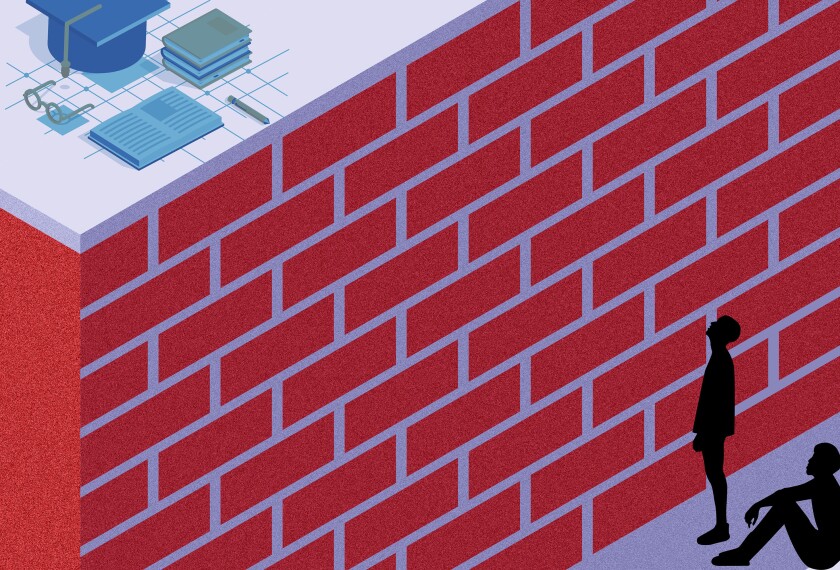Decades of neglect and inadequate or misdirected government and private investment have created enclaves in America where kids continue to fall further behind. The so-called “achievement gap” between the kids of top earners and those from the poorest families has increased by as much as 40 percent in the past few decades, and family incomes have declined by a third for America’s poorest children.
In Baltimore, Cleveland, New York City, and Ferguson, Mo., we have seen the results of this mismanagement and disinvestment. High rates of violence and interactions with the police are only the most visible demonstrations of problems facing communities of concentrated poverty in America, areas where too many young people remain unsafe, undereducated, and disconnected.
What we don’t hear about are the successes—the programs that have been shown to make a difference for America’s most disadvantaged youths. This, too, is a tragedy; it feeds a sense that these problems are hopeless and intractable. This couldn’t be further from the truth. In fact, social-mobility research and results from interventions across the country provide a playbook for successful anti-poverty efforts.

First, we know that place and poverty are tightly linked. by the economists Raj Chetty and Nathaniel Hendren have shown that children growing up in concentrated poverty have significantly worse life outcomes than their peers. In the Moving to Opportunity experiment, children under 13 who moved to a less-poor neighborhood earned 31 percent more as adults than otherwise similar kids who did not move.
This research shows why it is more difficult for children growing up in poor neighborhoods to break poverty’s grasp, but also provides a road map for reform.
Single-parent families, elementary school quality, youth and adult employment, and civic and religious involvement all play a role in a student’s future. The most successful efforts recognize this interconnectedness and increase, or decrease, their impact by focusing on particular communities and tackling multiple issues simultaneously. Public and private organizations and community and philanthropic leaders should learn from and support these holistic, place-based efforts.
Second, there is no single moment or intervention in the life of a child that guarantees success. But research has identified several milestones on the path to adulthood that especially determine success at later stages. This is where evidence-based programs can have the greatest impact.
The problem is not that we don’t know how to improve the lives of our children. The problem is that we’re not doing it.
We know that a healthy and secure start in life is critical to the development of social and cognitive skills and other indicators of well-being. Entering school ready to learn is another vital marker. Parental education and access to high-quality preschool have been shown to improve a range of life outcomes, from earnings to crime. And kids who aren’t reading proficiently by 3rd grade are . Kids living in poor neighborhoods and not reading proficiently by 3rd grade are around nine times less likely to graduate on time.
Research and efforts like the Social Genome Project have identified these and other important developmental milestones where interventions matter most. Instead of building isolated programs, we should focus efforts around helping children move successfully through these critical life stages.
Third, in addition to knowing where and when to focus, there is growing evidence on what works. Home-visit programs like the Nurse-Family Partnership lead to improvements in behavioral and academic outcomes that persist throughout childhood and are highly cost-effective. found that every dollar invested in nurse visits to low-income mothers produced $5.70 in benefits. Tutoring programs like the Minnesota Reading Corps have led to marked increases in early literacy.
Proven solutions aren’t limited to early childhood. Chicago’s Becoming a Man program, which helps at-risk 7th to 12th grade male students develop social-cognitive skills such as impulse control and goal-setting, has been shown to decrease arrests for violent crimes by 44 percent. When this was paired with intensive tutoring, math test scores improved by the equivalent of three years of learning, and course failure was reduced by 57 percent, according to .
These, and many other examples of success, give us a set of evidence-based best practices that policymakers and funders should encourage, replicate, and bring to scale, while still encouraging game-changing innovations in these and other areas of significant need.
President Barack Obama’s My Brother’s Keeper initiative and other national and community-based efforts have already begun this work, but turning the tide for the next generation of kids will require a deeper commitment—and a focus on promising solutions in equal measure to where we fall short. Otherwise, we will only feed a sense of anger and hopelessness.
The problem is not that we don’t know how to improve the lives of our children. The problem is that we’re not doing it. Research has increasingly shown us what works, when it works, and where to focus our efforts. Leaders at the federal, state, and local levels should pursue a serious opportunity agenda that draws on the evidence and promise that can help us guide at-risk children toward a better future.


